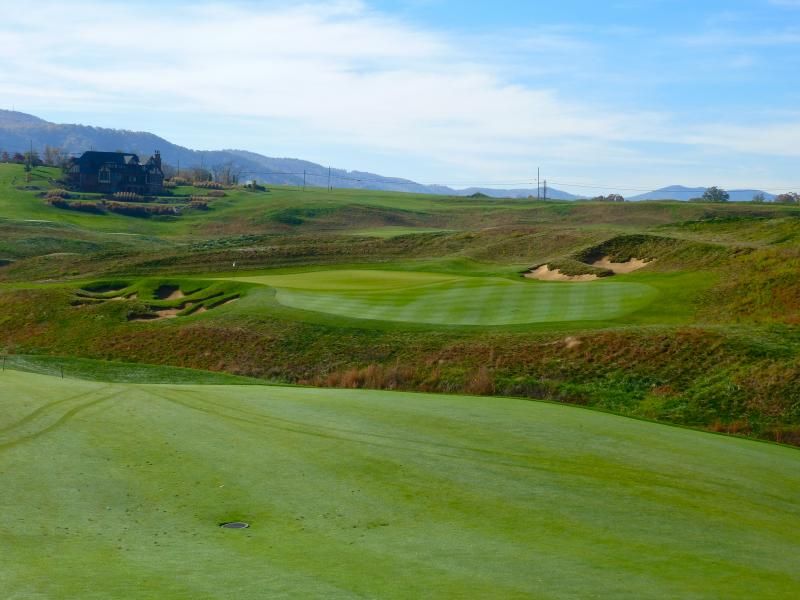Going further on what Kevin and Andy mention, one of the things that most appeals to me about Dye's best work is the lack of a "right answer" in how to play each hole. The best Pete Dye holes are strategic at the individual player level, as there will be several options presented that all have various pros and cons depending on the strength of a golfer's game. Unlike many other architects, though, Dye doesn't build as much "universal strategy" into his best courses. There's no obvious play that will lead to a universally advantageous angle, but instead a handful of options that all feel just a little bit uncomfortable.
To give an example from the sister thread to this one, the fourth hole at Ballyhack is a good, strategic par 4 that provides a nice example of what I would call "universal strategy." Off the tee, the risk becomes higher as the player's line moves further right. In turn, the player able to hit the right side of the fairway off the tee is rewarded with a more advantageous angle of approach. This strategy is universal in the sense that, for virtually any player regardless of his particular skillset, the drive up the right is more challenging while in turn the approach from the right is easier. The carry over the hazard from the right side is shorter, and the angle into the green is more straightforward. The further left you get, the more the bunkers and the ravine come into play. This is true for everyone, and thus the hole is fairly straightforward: Get as close to the right side as you can off the tee, but don't screw up and go too far right.

Contrast that with the first hole at Pete Dye Golf Club which presents two main options from the tee: right and left. If you drive right at PDGC, you face a longer, visually obscured, and awkward approach to a green that actually is fairly receptive to shots from that angle. If you drive left, you get a shorter approach but still have to clear a fronting bunker and control your spin and yardage very precisely. The approach from the right is probably easier for some players thanks to its more forgiving angle, while the approach from the left might be easier for other players since it's shorter. There's no right answer and I suspect that members of the course likely prefer different approach angles depending on their own skillset. This isn't necessarily better or worse than the "universal strategy" of a hole like Ballyhack's 4th, but it does provide an interesting ambiguity that makes one of the central elements to Dye's best courses.
It's worth noting that playing down the right side is practically mandatory for a shorter hitter who won't be able to clear the valley of bunkers up the left and, in turn, the approach from that side allows the ball to run onto the green while the approach for a longer hitter who can get to the lower fairway on the left side will need to be lofted and spun with precision. That balance helps the course accommodate weaker hitters while still challenging stronger players.